2011-11-09
被災地支援活動レポート EN(廣瀬俊介 / TRST)

Tohoku Revitalization Support Team (TRST) – Activities Report as of 9 November 2011
By Shunsuke Hirose, Associate Professor, Tohoku University of Art & Design
English proofreading by courtesy of Ms. Petra Schiffarth and Ms. Linda Ruswinkle
Background
After the earthquake and tsunami that devastated the Tohoku region of Japan on 11 March 2011, Yosuke Taga, a fellow landscape designer, and I decided to start volunteer activities in order to make a contribution to the revitalization of the Tohoku region.
About 15 students of my university (Tohoku University of Art & Design – TUAD), mainly from the departments of architecture and landscape design, volunteered to take part in the activities.
In April, Yosuke Taga visited various places in Fukushima, Miyagi and Iwate prefectures and proposed our support. Eventually, we received requests for help from three villages in Miyagi prefecture. The center of our activities is the village of Tachihama located on Ogatsu bay. Further activities took / will take place in the neighbouring village of Myojin, also on Ogatsu bay, and at Oiwake-onsen, a hot spring resort which is currently being used as a refugee center about 30 km north of Tachihama.
Since people in the devastated areas are still busy organizing their lives and cleaning up their private property, we decided to focus our activities on public spaces and places of public interest to achieve some improvement for the local community.
Our initial project, on 20-21 May, was to clean a Buddhist temple in Tachihama, which had also served as a refugee center. The temple and Buddhist statues had been partly damaged and soiled due to the earthquake. We helped the priest clean the building and statues and reinstall them so that the temple can once again be used for prayer and worship.
On 21 May we also organised an “Interview Café” at Oiwake-onsen. We provided the refugees with an opportunity to talk in a relaxed atmosphere over a free cup of coffee. Many refugees used the chance to share with us their experiences of the disaster, their recollections of the past, as well as their hopes for the future.
Further, we were requested by the village of Myojin to help reconstruct a dry stone wall and a stone stairway leading to the local Shinto shrine, both of which were destroyed by the tsunami. In this village almost all of the inhabitants were killed by the tsunami. Therefore it was important to restore this place of prayer for the remaining villagers.
The following report describes our work in Tachihama, which has been the focus of our activities to date.
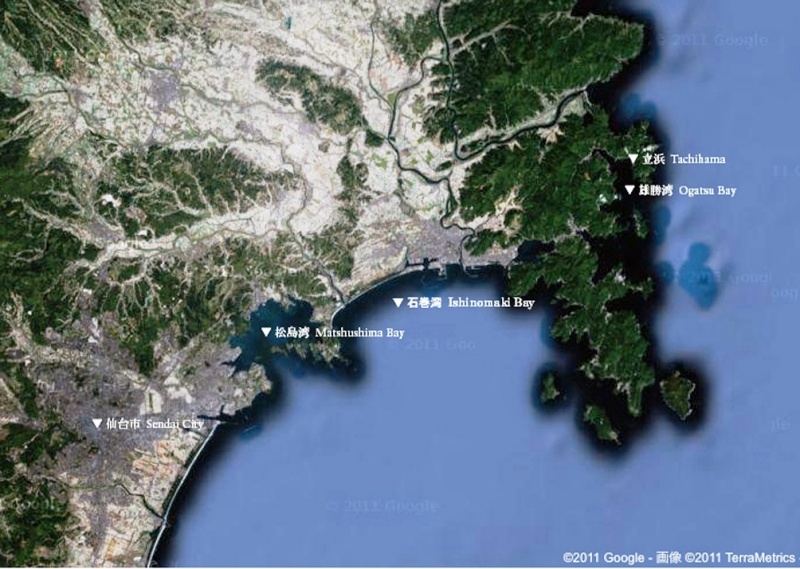
Location map (Tachihama, a small fishing village on Ogatsu Bay in Miyagi Prefecture)
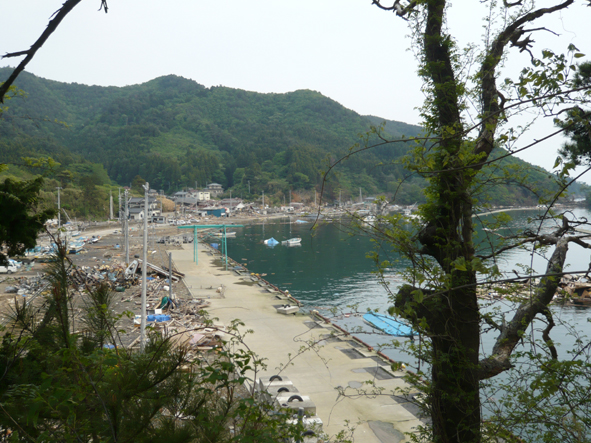
The devastation of Tachihama port (picture taken on 20 May)

Some houses have been washed out by the undertow (picture taken on 20 May)

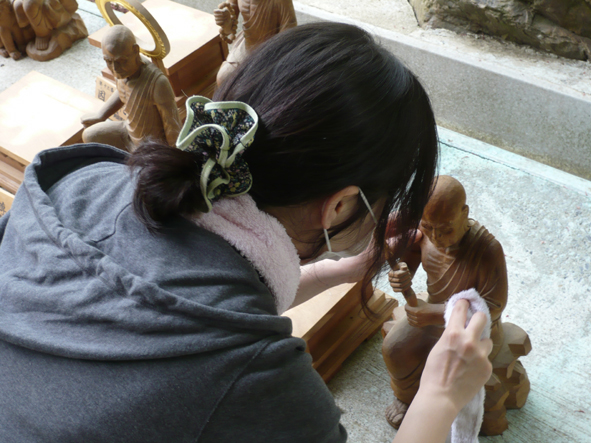
We started our activity for Tachihama at Ryutakuji temple. We helped the priest clean the building and Buddhist statues damaged and soiled by the earthquake. This local religious site has now been restored to its state prior to the tsunami
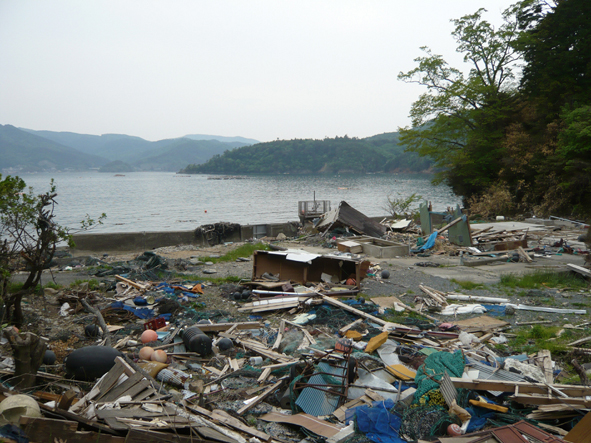
Situation close to the port on 20 May. Because the people of Tachihama were still busy cleaning up their private property, we felt that our support was required for cleaning public and semi-public spaces.
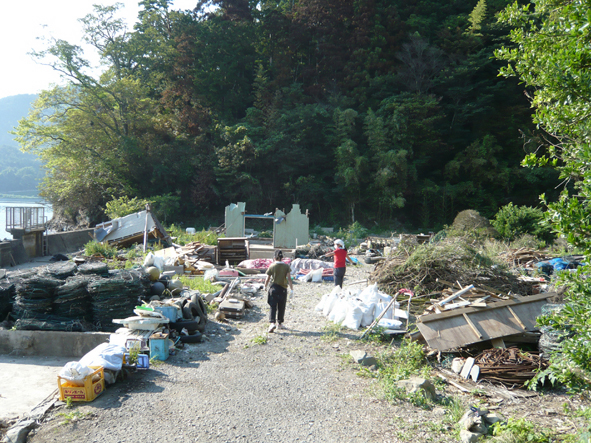
The same location on 11 July. With a team of 12-13 members, it took us 4, 5 days to clean up the space, thoroughly dividing materials such as wood, plastic, fishing nets,etc.

The situation on 17 June. By cleaning up the waterfront (removing fishing nets and rubbish from destroyed houses) we tried to remove the traces of the tsunami …
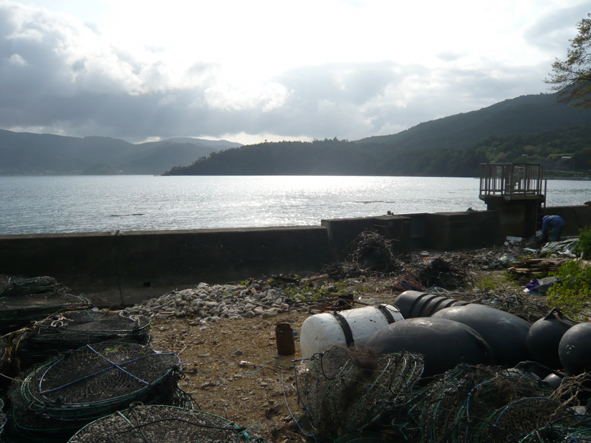
… and to restore the landscape to its original shape. This will allow the people of Tachihama to rebuild their relationship with the sea. This is what we call “landscape repair”.

Before starting our work on 10 July.
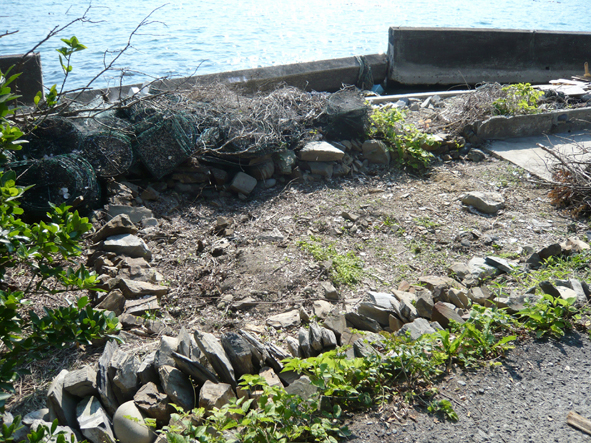
The same situation after one day of work: we cleared away the rubbish as far as possible and collected stones in one place for later use.

The stones we collected and lined up will be used to secure the slope shown in the picture below.

The slope should be secured in order to prevent further erosion.
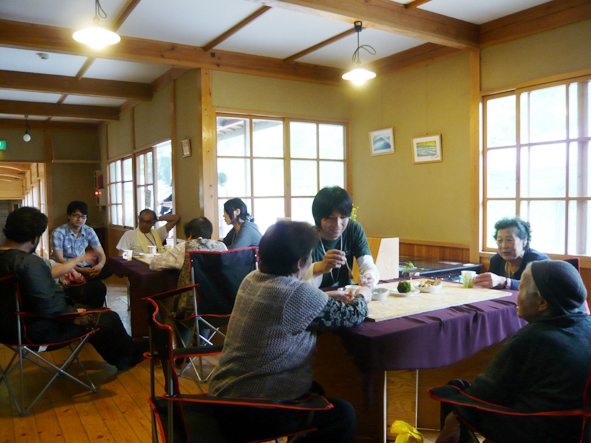
Interview Café on 21 May: We also organised an “Interview Café” at Oiwake-onsen which is housing evacuees from several villages on Ogatsu Bay. Speaking with these people helped us to understand the former way of life and local traditional land use and methods in the region.

Interview Café on 10 July: We learned about local garden construction from some pictures which belonged to an old woman.
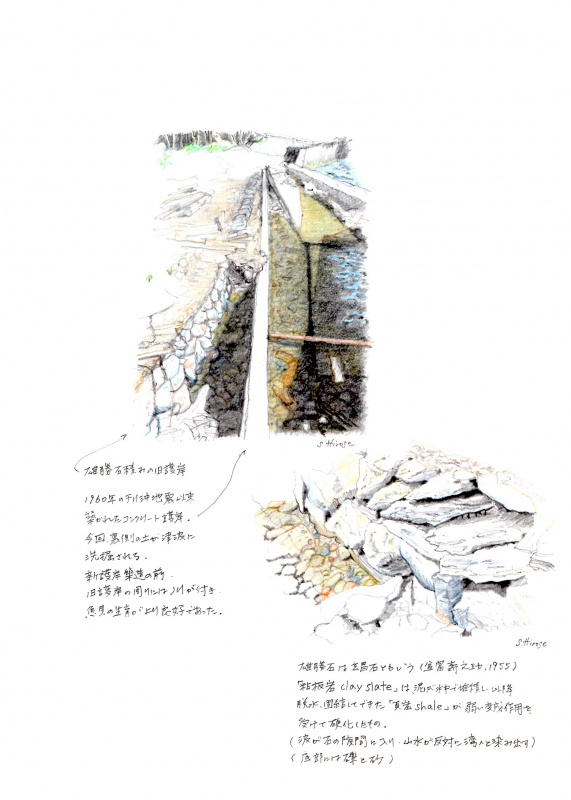
Panel 1: Analytical sketch of the situation at Tachihama port
The concrete wall has been washed out by the tsunami, collapsed and cracked. Behind it, the original dry stone wall emerged.
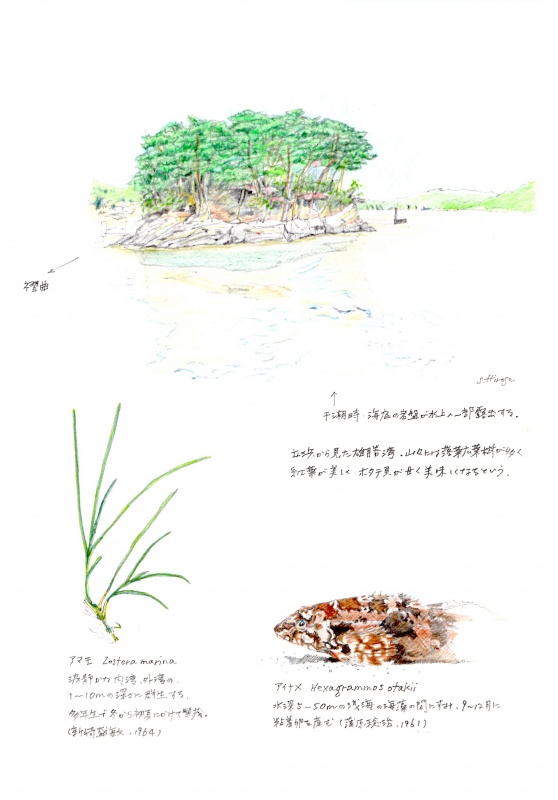
Panel 2: Analytical sketch of the situation at Tachihama bay
The landscape of the bay and two of the living organisms which are a part of the bay’s ecological system.

Myojin, another village on Ogatsu Bay, requested our help to repair their cemetery on the mountainside.

We started our support activity in there on 16 Oct. First, we carried rocks and crushed stones up the hill.

The ground of cemetery was eroded by rainwater when a typhoon hit this area.
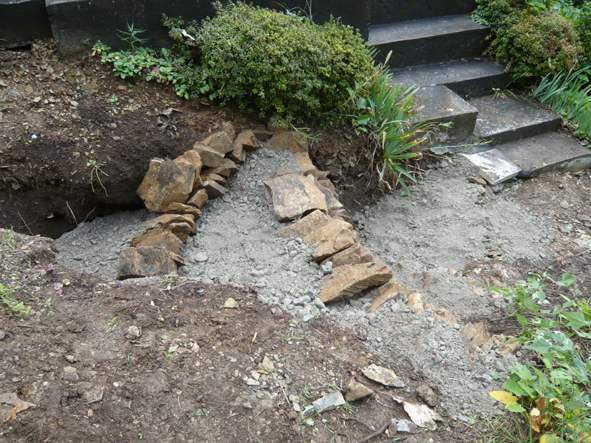
First, we cleaned scattered garbage that had been strewn by run-off from the heavy rain.
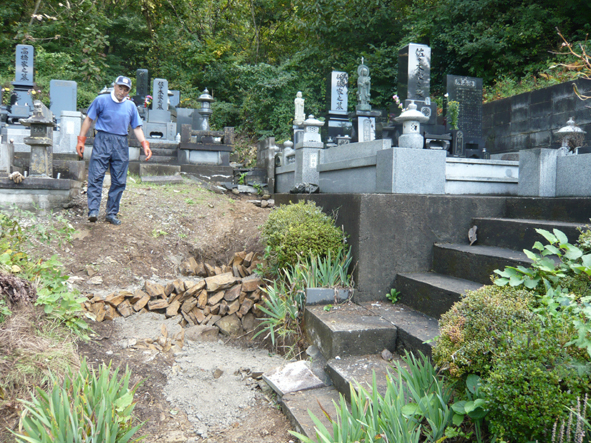
Next, we filled hollows with crushed stone. Then we built some dry-stone walls there to repair the area and to help prevent future erosion.
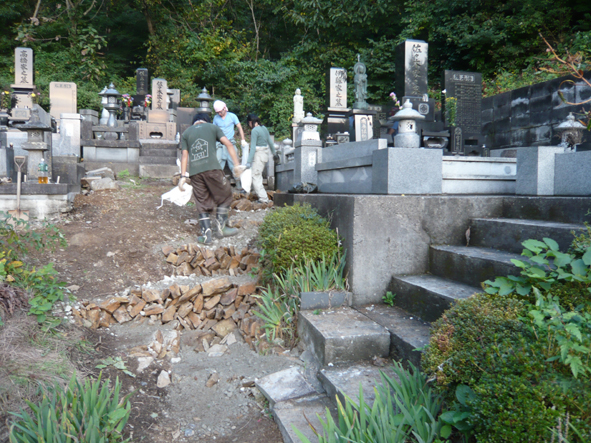
The dry-stone walls from an anterior view.
We built 31m of dry wall with the intent that they will slow rain run-off and allow the rain to soak into the earth rather than eroding it. After the next heavy rain, we will check how well our dry walls performed and make corrections as required.
Our last support activity for 2011 should take place in Tachihama in early December when we plan to do further cleaning up and repair of public spaces. During the coming snowy season, we will do further research with the intent to create a landscape revitalization plan for Tachihama, Myojin and the other villages on Ogatsu Bay.
Thank you for your interest.
Contact information
Shunsuke Hirose:
hirose.shunsuke@aga.tuad.ac.jp






